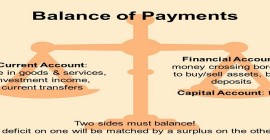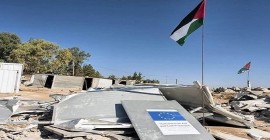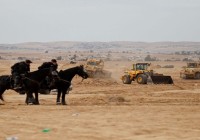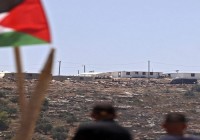The Palestinian Economy Dilemma: the Loans of Today Won’t Solve the Crises of Tomorrow
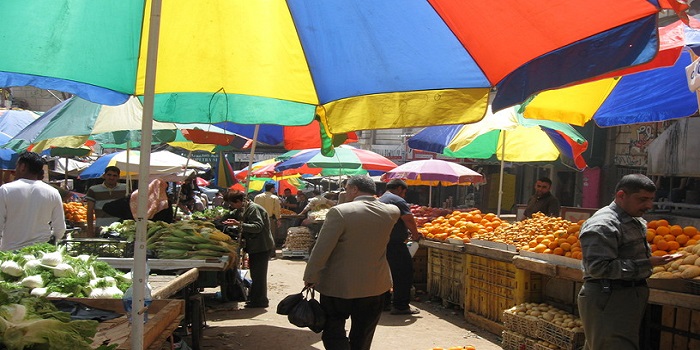
Translated by Tamara Barakat
While the Palestine Monetary Authority anticipated that the Palestinian economy will grow by 3.1% in 2015, after having deflated in 2014, experts doubted these forecasts and described them as “optimistic and built on numbers rather than data from reality.”
The Monetary Authority attributed the anticipated growth to the “investment activity that is connected to the reconstruction of the Gaza Strip, the improvement in the consumer spending funded by bank loans, and the increase in the number of Palestinian workers in Israel.”
Moreover, the Monetary Authority anticipated a slight improvement in the economy in 2016 in comparison with 2015, expecting the GDP to grow by 3.3%. The GDP decreased by 0.2% in 2014 as a direct result of the Israeli Occupation’s incursion on the Gaza Strip.
Indicators that Do Not Reflect Reality
At the same time, analysists believe that the loans and grants will not be able to rid the economy from its crisis. The economic expert, Nasser Abed Al-Kareem, affirms that the aforementioned forecasts “do not reflect the reality on the ground since the reconstruction of Gaza is taking place slowly.” He also mentions that the amount spent on the reconstruction of Gaza until now does not exceed $200 million of the overall $5.4 billion pledged at the Cairo Conference on Gaza reconstruction, held in October 2014, half of which are designated for the reconstruction of Gaza.
In an interview with the “the New Arab,” Abed Al-Kareem did not anticipate any radical change to occur regarding the reconstruction of Gaza “because of the complicated political and security conditions.” As for the growth in consumption that is funded by the banking sector, Abed Al-Kareem said that, “the Palestinian banks’ ability to give loans is almost satiated since the banking sector is witnessing a decline in credit and deposit facilitations. Also, there are almost no more customers who are able to borrow loans with an acceptable degree of risk, no growth in the labor force, and no increase in the pay of employees, and so, their consumption abilities remained the same.”
Abed Al-Kareem believes that the Palestinians citizen is living in an unprecedented state of ambiguity. “Palestinian citizens cannot borrow a long-term loan in order to satisfy their consumption needs, unless it is absolutely necessary. And banks do not give loans unless the borrowers have proved their ability to repay the money, or else the banks will put the money of their depositors in danger. He also questions, “If merchants and citizens are very careful in spending and investment, what do you think the banks will be?”
According to data published by banks, the amount of consumer loans granted by the operating banks in Palestine to their customers reached a billion dollars out of the total $5 billion credit facilitations given to the Government, private sector companies, and individuals last year.
Abed Al-Kareem expects that once the data on the growth of the Palestinian economy in 2015 is published, it will show that the growth was close to zero. “The growth in the GDP will be less than the normal growth rate of the population for the fourth year, which indicates that the Palestinian economy will not be able to create any new jobs.”
Ignoring the Habbeh
According to analysts, the Palestine Monetary Authority ignored in its economic forecasts the current outburst of protests against the Israeli occupation, known as “Al-Habbeh,” since the beginning of October 2015, in which 150 Palestinians were killed, a thousand others injured, and economic indicators deteriorated.
The Monetary Authority expects that the income per capita will increase by 1% during 2016, reaching $1774. There is a great disparity between the incomes per capita in the West Bank ($2200 yearly) and the Gaza Strip ($1350 yearly).
Analysis regard the income per capita as the most important indicator of exposure of the Palestinian economy, which is deeply dependent on the Israeli economy.
Palestinian trade unions say that “100 workers in the Palestinian labor market receive monthly salaries that are below the minimum wage of 1450 shekels ($374) specified by the Government.”
Moreover, the Palestinian Central Bureau of Statistics classifies families as poor when they are made up of an average of four members who receive a monthly income of 2300 shekels. The Government, on the other hand, set the minimum wage at 1450 shekels.
Firas Jaber, member of the Social and Economic Policies Monitor (Marsad), believes that poverty rates increased noticeably in the past few years due to the consecutive wars on the Gaza Strip, the loss of thousands of families of their sources of income, and the inflation witnessed in the West Bank.
Other Indicators
The Monetary Authority’s forecasts show a slight decrease in the inflation rate to 1.5% in 2015, in comparison with 1.7% in 2014, and a growth in exports and imports by 6.6% and 8.3% respectively.
The Authority said that its “forecasts are susceptible to the economic and political stability, especially since the Palestinian economy operates in a context full of high risks.”
Public Finance
The decrease in financial and international aid to the Palestinian Treasury left the decision makers with many challenges regarding finding the mechanisms to face this new reality, as expenses keep on increasing. The Palestinian Government says that the overall international aid it received in 2015 was $700 million, while it used to be $1.1 billion in previous years.
Mahmoud Al-Jafari, the Dean of the Institute of Administration and Economics at Al-Quds University, told “the New Arab” that the PA was forced to rely more in its revenues on the tax revenues collected by Israel on behalf of the PA than on donor money.
He says that the donor money used to form 53% of the Palestinian Government’s total revenues 8 years ago, but has decreased to below 25% nowadays. At the same time, the tax clearance revenues increased. “This means that the Palestinian economic dependence on Israel increased, and exports increased in order to increase the clearance revenues, at the expense of local and private sector production.”
Analysts say that the state of the Palestinian economy is worrying, at a time when there are no official strategic efforts to get out of this dilemma regardless of the developments in the political affairs.
(The New Arab, Mohammad Rjoub)
